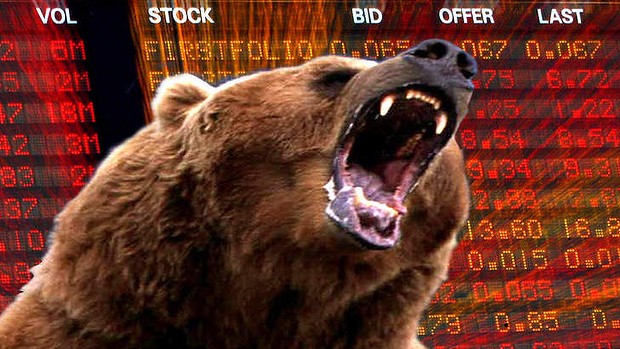
Amid sharp sell-offs and quick rebounds, one strategist forecasts a possible bear market for Wall Street before all is said and done.
“I wouldn’t be surprised if we saw a 15 percent or even a 20 percent move off the highs before this thing finally bottoms out,” Matt Maley, equity strategist at Miller Tabak, told CNBC’s “Trading Nation” on Tuesday.
As of Tuesday’s close, the S&P 500 was 9 percent below an all-time high set on Jan. 26, putting markets short the 10 percent threshold indicative of a correction. The benchmark index gapped 12 percent from January highs during a sell-off on February. A drop of more than 20 percent from those January record highs would signify a bear market.
Maley does see some silver linings in the charts. For one, the S&P 500 has managed to hold above a trendline dating two years. It has also held around its 200-day moving average. The index closed Tuesday’s session 0.6 percent higher than that key support level.
“However, I’m still more cautious on an intermediate-term basis. I think there’s too many uncertainties in the world right now,” said Maley.
Interest rates on the move are one major unknown for markets, he says. Long-term interest rates broke above their downward trendline earlier this year, which signaled an end to the multidecade bond bull run. The falling rates cycle had lasted roughly 36 years.
“Since then, we’ve had this issue with regulation with the technology stocks, we have widening credit spreads, we have the flattening of the yield curve, and, of course, the Fed is shrinking the balance sheet,” said Maley.
Gina Sanchez, CEO of Chantico Global, also sees the potential for more stock market pain as economic expansion in global markets slows. A slowdown should catch up to U.S. markets, she said.
“We’re not quite seeing the peaking that you’re seeing in the rest of the world because we have had tax stimulus,” Sanchez told “Trading Nation.” “However, we can’t forestall it forever. At some point, we will have to sort of face the fact that what goes up must come down.”
The market peak should come faster once the Fed picks up speed in normalizing monetary policy, says Sanchez. The Fed is expected to increase rates at least two more times this year after a hike at the March meeting. The central bank is simultaneously unwinding its balance sheet.
“It’s time for us to sort of take a step back and say, how much of this is demand driven? And how much of this has been the result of this extraordinary fiscal expansion now that we start to pull back the monetary accommodation?” said Sanchez. “That’s the question the markets are asking themselves.”
As of Tuesday, the S&P 500 has fallen 2 percent this year, the FTSE 100 in London 8.6 percent, Germany’s DAX 7 percent, Japan’s Nikkei 6.5 percent and France’s CAC 40 3 percent.
























